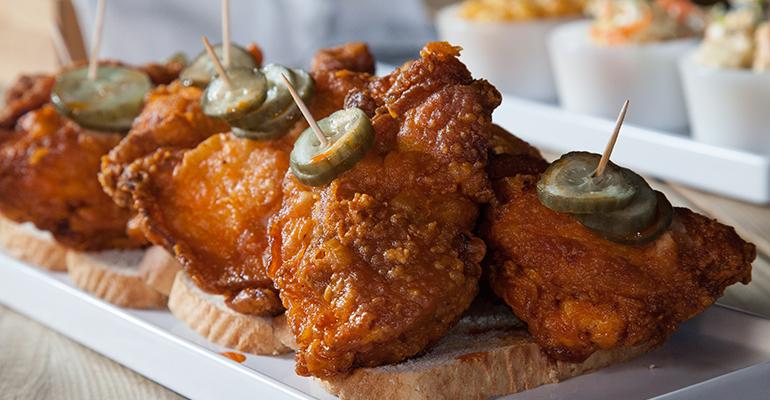A January 2015 survey of 1,300 US consumers conducted by Kalsec found that 56 percent of consumers eat spicy foods at least once per week; one out of four are eating spicy foods more often than they did the year prior; and two out of five agree that food tastes better with some level of heat.
Maria Pourteymour, chief cuisine officer of San Diego-based Luna Grill, says that spicy food is definitely having its moment in the spotlight. “Consumers' palates have changed; we’ve noticed there’s a demand now for dishes with spice, and our guests are more open than ever to trying dishes with a little heat. Whenever we introduce a spicy item, oftentimes it outperforms other nonspicy items in its category.”
Rich Friedrich, culinary director at New Jersey-based P.J.W. Restaurant Group, agrees. “Customers’ palates have grown, as ethnic and exotic ingredients become more widely available,” he says. “There was a time you couldn’t easily buy canned chipotles or tubes of wasabi at the grocery store; now those foods are part of our culinary lexicon.”
Spice favorites
With hundreds of spices to choose from, how do you choose the ones that will appeal most to your guests? It comes down to matching your brand to your guest’s tastes. Along with the usual suspects such as buffalo, Cajun, chile and jalapeño, keep an eye out for trends in more poblano, red chiles, aji amarillo (a South American spice), sambal (from Southeast Asia), and gochujang (an Asian spicy, salty paste).
“Over the years we've introduced a variety of spices to our menu—chipotle, Serrano peppers, and cayenne pepper to name a few,” says Pourteymour. “Our Spicy Feta appetizer is our newest addition to the menu that features a bold, spicy flavor.”
“If it’s got great flavor and brings the heat, we’ll find an appropriate way to use any kind of spice, seasoning or condiment that complements the dish,” says Friedrich. “At P.J. Whelihan’s we use jalapeños, pepper and horseradish in our Jumpin’ Jack Burger; Old Bay on our famous crinkle cut fries; chipotle in our Chipotle Lime BBQ wings; long hot pepper relish on our Italian Pork Sandwich; jerk seasoning in our Jamaican Jerk Chicken Tacos; wasabi in our Seared Ahi Tuna Steak; and our very own chile cumin rub in our Fiesta Chicken Quesadilla.”
“All of our restaurants have Red S’hug sauce, which can be added to any order; it’s our spiciest sauce that is tomato-based and has lots of red chiles, garlic and many different aromatic spices that give it a very unique flavor,” says Andrew Ashmore, chef and director of culinary operations at Chicago-based Roti Modern Mediterranean. “We introduced a Green S’hug sauce that’s in a test phase at our newest location. This sauce is very spicy as well but is herb based with cilantro, parsley and basil. The heat comes from jalapenos and red chile flakes with lemon balancing out all of the flavors.”
Striking a balance
Integrating spice into your menu doesn’t always appeal to everyone. There are many consumers who enjoy a little kick, but can’t take too much heat. Keep this in mind when creating new menu items.
“It’s all about balance,” says Friedrich. “Our Bacon Shock Tots are fried tater tots topped with crispy bacon, jalapeño cheese sauce and creamy chipotle ranch. The cheese and the ranch in the two different sauces act as neutralizers for the heat of the jalapeño and chipotle.”
“Our spicy lamb meatballs get their spicy flavor from a whole lot of sriracha and crushed red pepper, but the spice is balanced by many other ingredients, including fresh mint and oregano, Parmesan cheese, garlic and onion, providing just enough heat to give customers the kick they’re looking for,” says Ashmore.
“When using spice you should never let it overpower the dish; remember balance,” says Pourteymour. “You’re creating an item that needs to appeal to a variety of palates and you want to taste all of the flavors.”





